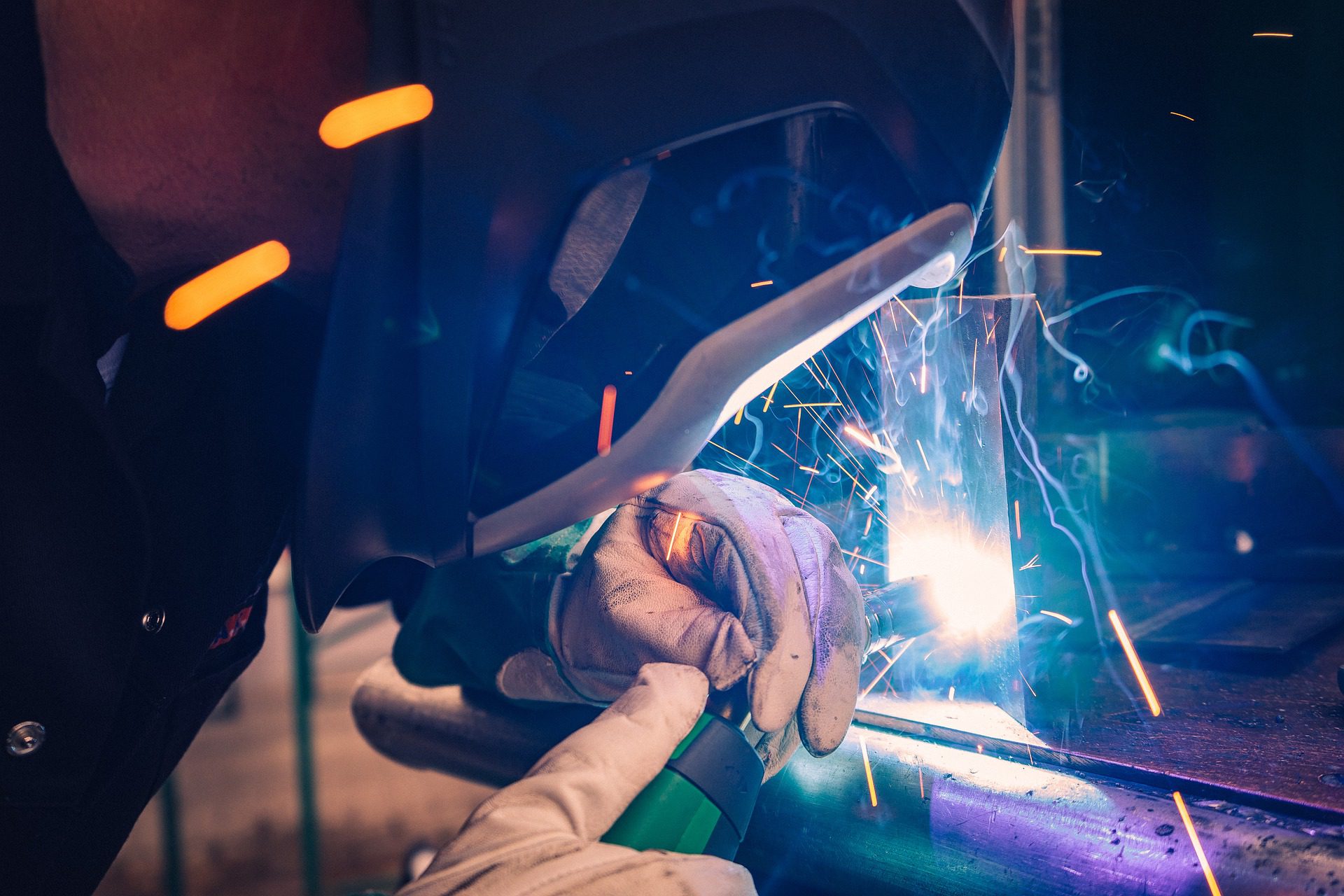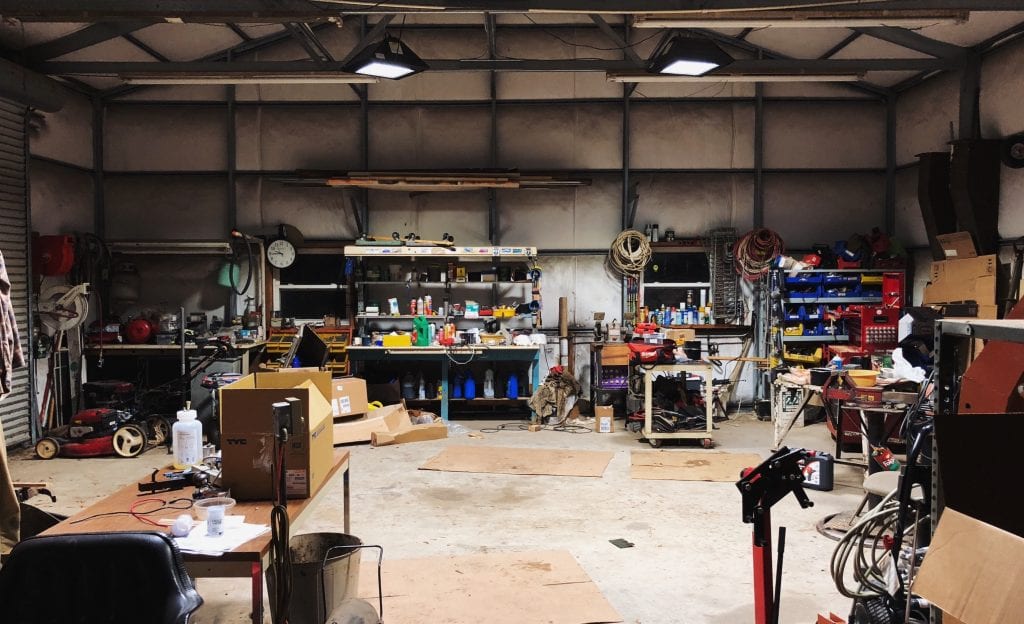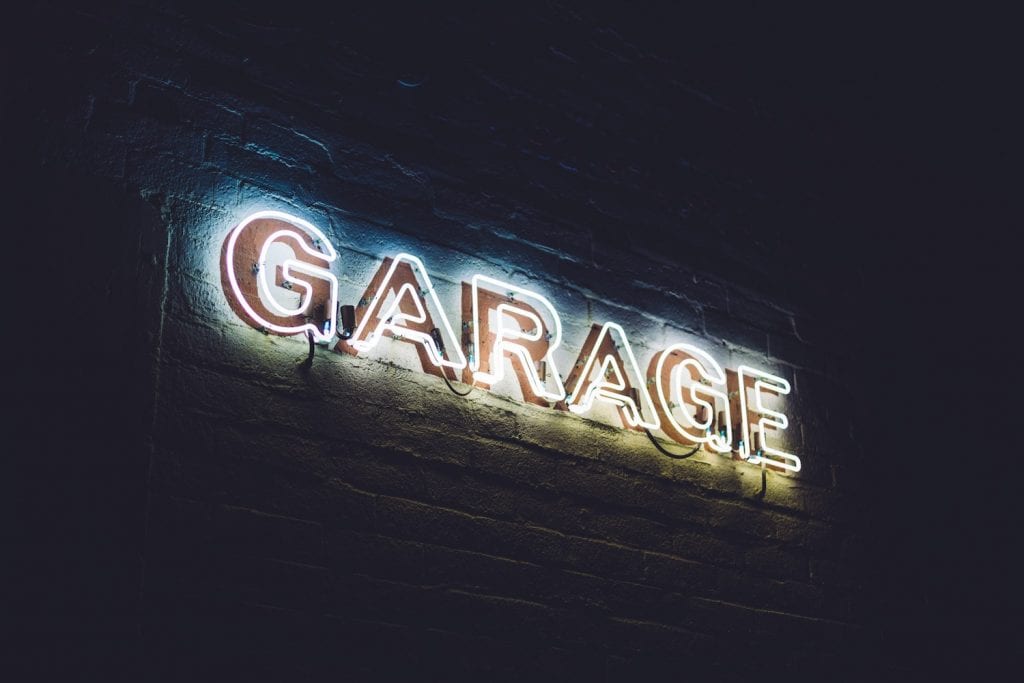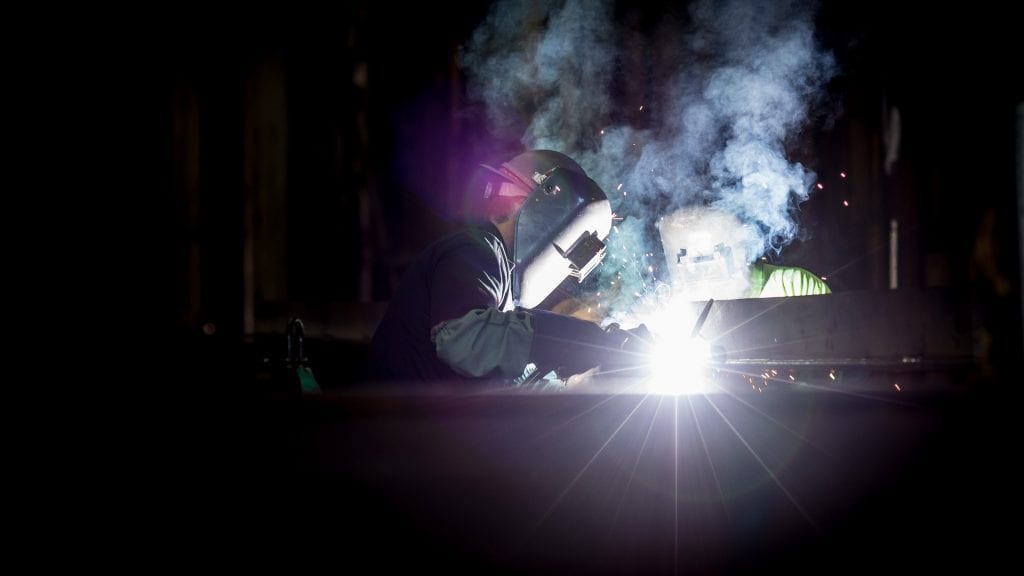Whether you are working in a small shop or a big factory, welding safety is going to be of the highest importance when working. But when it comes to welding in a small garage, the safety conditions might become even more dangerous due to a cramped space. Accidents can happen in a spur of a moment and everything could go ablaze just like that.
According to the Bureau of Labor Statistics, more than 500,000 welders suffer some type of a welding injury on a yearly basis. The most common type of injuries is caused by arc flashes, fire hazards, or due to toxic fumes that are created during the welding process.
Riders perhaps know this best as a single slip can cause you to hurt yourself and end up in a hospital. So properly securing your working area when welding is a must and the first thing that you have to think about if you are working from your garage. According to WeldingPros, a large number of welding accidents happen in an improperly secured welding garage.
Luckily, all of that can be avoided just by following some basic safety tips. Always think about safety first before starting your work.
Set Your Working Area Properly
The starting point that leads to safe welding is creating a safe working environment. It starts with properly setting and storing your equipment.
So, for instance, if you are not using your welder, keep it on a flat and dry surface and as far as you can from any flammable materials. Speaking of flammable materials, things like wood or cloth or anything else that can catch on fire quickly should be stored away in a safe place far away from the welding arc and welding area in general.
Electrical Installations and Electric Hazard
Make sure to have quality grounded installation and you can get an electrician to check all of that for you before you start doing any work to prevent any electrical hazards that may take place. Do not attempt to do this yourself if you are not a trained electrician!
What you can do is to check the work clamp, in particular, it needs to have a good metal-on-metal connection that is unimpeded by paint or any other unwanted materials. If not it will heat up and get damaged (you will also have poor weld quality).
Other simple things you can do to prevent these types of accidents:
- Keep your hands and welding gloves dry.
- Make sure the electrode holder and a welding gun are properly insulated.
- Wear proper welding gear.
- Make sure cables are not damaged.
- Turn off the welding machine when not in use.
You can read more on these on ccohs.ca
Tripping Hazards, Fire hazards, and Gas Cylinders
Welding and power cables can present a tripping hazard, they should not be all over the place but out of the way in the corners of the shop or hanging from the walls. Hoses from cylinders that hold protective gases or hoses from cutting torch kit can catch fire from welding sparks or hot metal should be in a safe distance and not in a direction of the welding or cutting sparks.
Be sure to store them in a safe way once you are done with them or find ways to tie the cables up once you are done. You can go to a hardware store and get a cable storage organizer to keep all of them in check.
Finally, handling gas cylinders is probably the most overlooked part. Make sure to keep them in an upright position at all times in a cart and secured by a chain. The protector cap should always be fastened to the top of the cylinder when moving it. Also, only hoses that are designed for welding should be used and always check for leakage.
It is also important to say that gas cylinders should also be stored away from the welding area just in case a welding arc sparks. You can even cover them with some inflammable asbestos cloth for added safety.
Keep a fire extinguisher close by at all times, close enough to the welding area so you can act quickly. But not just any kind of an extinguisher, get a CO2 extinguisher or a type that puts out electrical fires.
Garage Ventilation
The greatest hazard for a small welding garage is the fumes. The process of fusion welding creates harmful gasses that can create serious health problems. The gases involved may contain dangerous byproducts that include aluminum, arsenic, magnesium, beryllium, and even lead.
Short term exposure can cause you to have more than throat irritation but can lead to nausea and dizziness. Long term exposure can have much more devastating effects as it may potentially lead to cancer, kidney damage, liver damage, respiratory issues, and urinary tract problems.
The best way would be that there is no gas at all in your lungs and that your working area is well ventilated. That can be ensured with the addition of a quality welding aspirator placed directly above the welding area. Keeping a window or the garage door open is also good, but at the same time, the aspirator ensures that all the hazardous welding fumes are drawn out.
In order to achieve complete safety, clean all the welding surfaces after you finish working. Always stay upwind from welding fumes when working in an open area or in the outdoors. Use any local exhaust ventilation systems for indoor welding. But be sure to keep the exhaust ports away from yourself or other workers. If you notice that the ventilation system does not reduce the number of fumes, wearing respiratory protection.
Never weld in a confined space that isn’t properly ventilated.
Getting the Proper Personal Protective Equipment
The process of welding emits a lot of high-intensity radiation and spatter. When arc welding, there are going to be a lot of sparks flying around everywhere so you have to protect yourself from burns.
Wearing flame-resistant clothing is the way to start. We don’t mean a rider’s jacket but a proper flame-resistant welder’s jacket made out of leather that can protect your skin from burns. Long-sleeve shirts are desirable with buttoned-up cuffs and collars all the time as sparks can fly inside your suit and burn you.
The welding process actually emits X-rays, infra-red rays, and UV rays. Ultraviolet rays in particular can be damaging as they can cause skin burns and even lead to skin cancer in some drastic situations. Long-sleeve shirts and full-body protection is the only way to prevent these rays from getting to your skin.
Shoes are also important. Welding in your Nikes is not a good idea. You need some high-top leather boots that are resistant to high-intensity heat. If a spark catches your regular shoes they can either burn off or even melt and stick to your skin.
Finding some good gloves is also necessary. Get a pair of quality leather welding gloves, cowhide ones are the most appropriate. 1.2mm of thickness is the best way to go as they are both durable and provide flexibility for work at the same time.
Finally, the eyes are what you need to protect the most. Not having the proper welding mask can lead to thermal burns of your eyes or small particles that fly off striking your eye. So don’t even think of using a full-face helmet with a built-in visor. Get a proper welding helmet, perhaps an auto-darkening one. They not only provide the best protection but ensure quality work as well.
This helps avoid arc flashes that tend to happen all the time and a lot of welders suffer from a condition called “welder’s eye.” So when choosing your welding helmet make sure to go for one that has a certain protection standard. The price tag is not as important as your health.
Go for welding masks with ANSI Z87+ standards as they are tested for high-velocity impacts, so spatter cannot damage your eyes.





